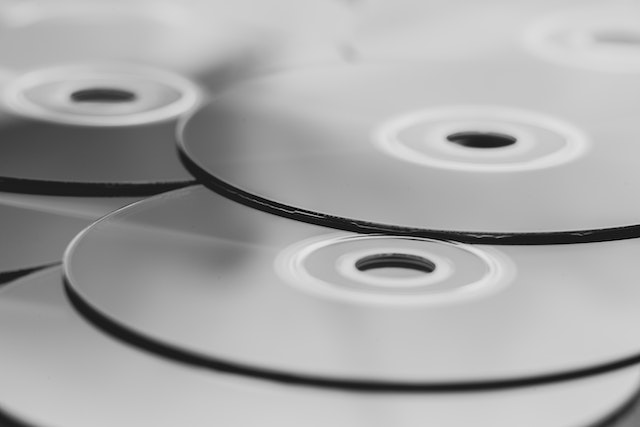
What is the difference between DVD and Blu-Ray? Their age, size, quality, audio, and the disc reading technology.
DVD is an older technology than Blu-Ray. The technology used to read DVDs was invented in 1958 by David Paul Gregg, an American engineer, and James Russell, an American inventor. Gregg invented a way to record video to a disc, which became the optical disc, Russell came up with a more complete method for recording video to a disc and a way to play it back. Their patents were bought up by various companies and paved the way for the DVD to be invented. There were several stages before the DVD technology was working and cheap enough for mass consumption. The LaserDisc was invented in 1978. They were large and couldn’t hold much data, but they were better quality than VHS. CD video was invented in 1987 and two types of DVD were invented in the early 1990s. They were Multimedia Compact Disc (MMCD) and Super Density (SD) disc. After a battle of the formats, SD won out and was renamed as DVD. The first movie DVDs were released in 1996. Blu-Ray was invented in 2002 to meet the requirements of the high-definition TVs that were starting to appear.
DVDs and Blu-Ray discs have a different size. A standard DVD can store 4.7 GB of data. It’s possible to make a double layer DVD, which can hold about 9 GB. That’s fine for a general movie, but file sizes increase as the quality of the movie increases. For example, a 2 hour movie in high-definition format is about 3 GB. In 4K format, it is about 44 GB and in 8K format, it is about 75 GB. A Blu-Ray disc can hold 50 GB of data, making it ideal for 4K movies.
The possibility to put far more data on the disc means that the quality of the video and the audio is far superior on a Blu-Ray than it is on a DVD. A Blu-Ray disc can hold three different types of audio that DVDs can’t hold. These are Dolby TrueHD, Dolby Digital Plus, and DTS-HD. These are audio formats that can compress more channels of audio, giving more layers to the audio and making it more realistic.
One of the biggest differences between the two discs comes from the way they are read. An optical disc is recorded to and read by a laser. A DVD is read by a red laser at a wavelength of 650 nanometers. When data is encoded on to the DVD disc, it is burned on as a series of microscopic bumps on a track. All information that computers read is a series of binary 1s and 0s, and this is what is burned onto the DVD track. The depth of the bump corresponds to a 1 or a 0. The amount of data that can be stored on the disc is related to the size of these bumps. The smaller and the closer together the bumps can be, the more data can fit on the disc. The problem is that the wavelength of the laser dictates the size of the bumps it can read. The laser in a CD player, for example, has a wavelength of 780 nanometers, which is 130 nanometers longer than a DVD player. This means the bumps have to be larger and more spaced out, reducing the amount of data that can fit on the CD. If you used a CD laser on a DVD, it would miss many of the bumps. The wavelength of a Blu-Ray laser is 405 nanometers, which is 245 nanometers shorter than a DVD. This means the bumps can be much smaller and more closely spaced. The bumps on a Blu-Ray disc are 0.32 microns long. The 650 nanometers of a DVD laser is the color we see as red. The 405 nanometers in a Blu-Ray laser is the color we see as blue, hence the name Blu-Ray.
Blu-Ray discs are obviously superior to DVDs, but they are more expensive as well. However, both of the discs may soon become obsolete. VHS cassettes came onto the market in 1976 and they had pretty much disappeared by 2000. The invention of the DVD rendered them obsolete. The invention of Blu-Ray hasn’t made DVDs obsolete because DVDs are cheaper, and a Blu-Ray player can play DVDs. However, the huge popularity of streaming sites, such as Netflix and Amazon Prime, along with cloud storage and the latest generation of smart TVs, means that DVDs and Blu-Ray discs probably don’t have much life left. A lot of people do still use and buy them, but within ten years I think the technology will have disappeared. And this is what I learned today.
Photo by Sergei Starostin: https://www.pexels.com/photo/white-and-black-optical-drive-6429163/
Sources
https://screenrant.com/history-blu-ray-everything-know/
https://en.wikipedia.org/wiki/James_Russell_(inventor)
https://en.wikipedia.org/wiki/David_Paul_Gregg
https://en.wikipedia.org/wiki/Optical_disc
https://www.scientificamerican.com/article/whats-a-dvd-and-how-does/
https://electronics.howstuffworks.com/dvd-player.htm
https://www.alliancestoragetechnologies.com/technology-blog/280-bv
https://southtree.com/blogs/artifact/the-history-of-the-dvd
